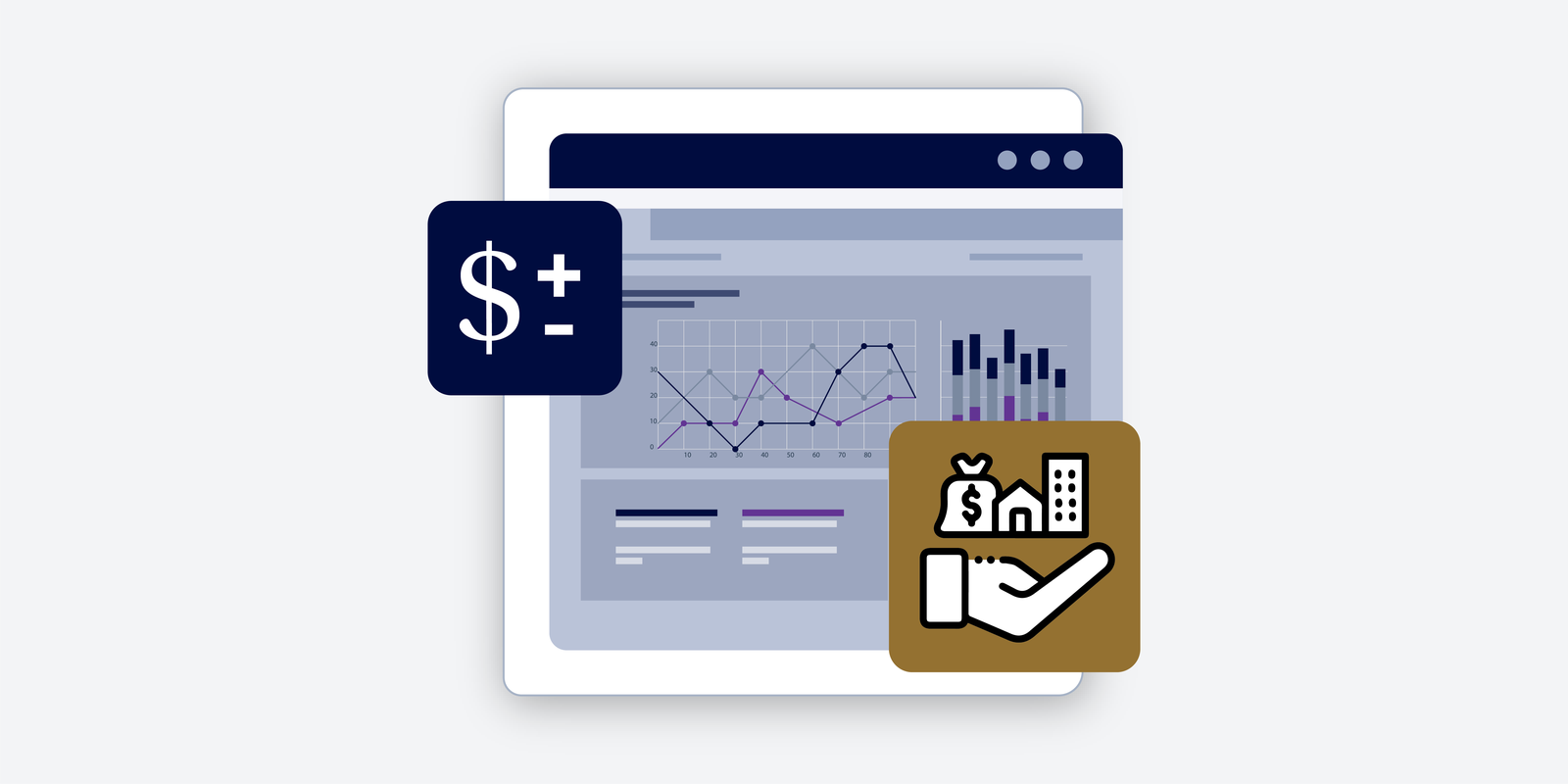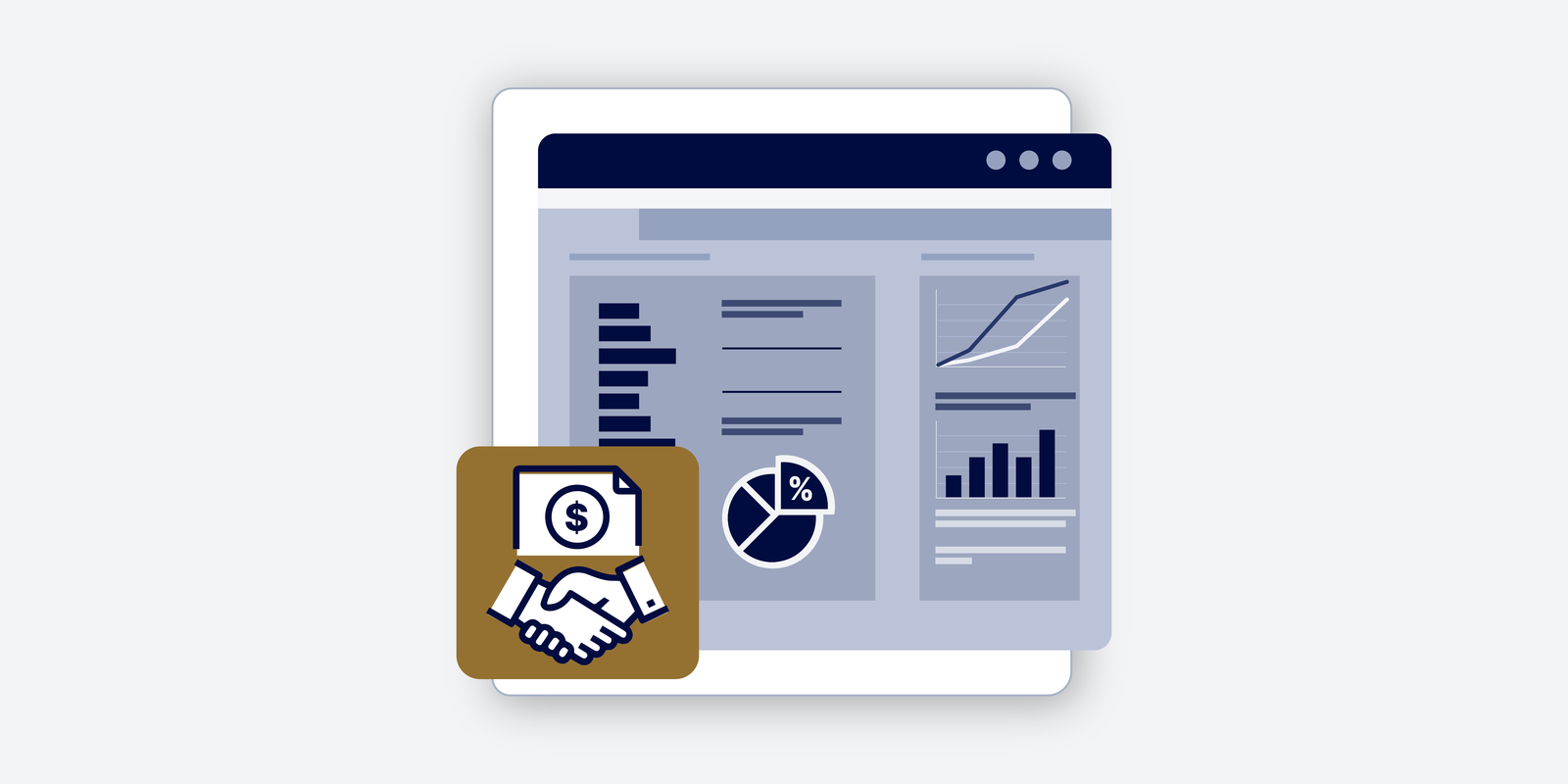Corporate Finance Explained | The Financial Strategies of Subscription-Based Businesses
Subscription Economics: Mastering LTV, Churn, and Recurring Revenue
The Subscription Economy has fundamentally reshaped corporate finance, moving the focus from one-time sales to long-term customer relationships. For professionals in FP&A, IR, and Corporate Strategy, understanding this shift is critical for forecasting and valuation.
In this episode of Corporate Finance Explained on FinPod, we break down the unique financial mechanics of recurring revenue, examine key metrics, and explore how the most successful companies manage this model.
The Core Shift: Value & Metrics
The subscription model swaps short-term cash hits for long-term predictability, which investors reward with higher valuation multiples.
- The Critical Ratio (LTV:CAC): We break down the relationship between Customer Lifetime Value (LTV) and Customer Acquisition Cost (CAC). Learn why the benchmark is LTV ≥ 3x CAC and the pitfalls of inflating LTV with non-recurring revenue.
- The Accounting Challenge: We explain revenue recognition (ASC 606/IFRS 15) and the concept of Deferred Revenue. Cash is received upfront, but revenue is recognized over time, which can make financial statements appear less profitable during high-growth periods.
- The Cautionary Tale: Analysis of MoviePass reveals the danger of fundamentally broken unit economics, where the cost to serve the customer (CoGS) was higher than the subscription fee, accelerating the path to bankruptcy.
Strategic Playbooks & Success Stories
Successful companies master the mechanics of growth and retention, managing complex P&Ls and investor expectations:
- The Content Giant (Netflix): The challenge of balancing liquidity and leverage while managing billions in content amortization to drive retention and reduce churn (even a half-percent increase means millions in lost ARR).
- The SaaS Pioneer (Salesforce): Leveraging deferred revenue as an interest-free loan and obsessively tracking Net Revenue Retention (NRR), measuring if existing customers increase their spending over time.
- The Strategic Pivot (Adobe): The painful but successful transition from a lumpy license model to the predictable Creative Cloud subscription, which required transparent communication to manage market expectations.
- The Hybrid Model (Peloton, Amazon Prime): Understanding that the high-cost hardware sale is primarily a customer acquisition channel for the much more valuable, low-cost recurring content stream.
The Modern Finance Mandate
- Mastering the subscription model requires blending traditional corporate rigor with data science:
- Cohort Analysis: Shifting forecasting models to track groups of customers based on sign-up time, revealing granular insights into renewal rates, upgrades, and churn patterns.
- Proactive Scenario Modeling: Forward-looking planning (FP&A) must run rigorous sensitivity analyses, modeling the impact if CAC jumps 15% or if churn spikes, to prepare leadership for potential volatility.
- Communication is Strategy: Clearly articulating metrics like NRR and the path for LTV expansion to maintain premium public market valuations.
Transcript
Okay, if you just glance at your bank statement lately, it’s pretty obvious, right? The subscription economy is everywhere. You’ve got Netflix, Spotify, probably Microsoft 365, maybe even your gym membership or the software your company uses. It’s all these recurring fees. But what’s actually going on behind the curtain, financially speaking, because these models, they’ve really changed how businesses plan things out, how they forecast their cash, and even how they talk to investors about their value.
(…)
Okay, let’s unpack this. Let’s figure out how these recurring revenue engines are reshaping finance. Yeah, that’s exactly what we’re diving into today. It’s really the core mission. It’s not enough anymore to just look at quarterly sales figures or gross margins per product. That’s kind of old thinking now for anyone listening who’s in, say, FP&A, corporate strategy, investor relations. Understanding these subscription economics is absolutely critical. You need to get past the jargon, the acronyms, and really explain how the financial plumbing actually shifts when you swap those big one-time sales for these ongoing customer commitments. Our goal, it’s really to detail that shift. I’m thinking about single transactions to managing the finances of a long-term relationship.
(…)
Okay, so let’s start right at the beginning, the core mechanic. A subscription business, basically, it offers ongoing access to something for regular fee, right? Monthly, annually, whatever it is. But the financial decision packed into that simple model, it’s huge. Oh, definitely. It forces an immediate trade-off, like you said. Yeah. A company running on subscriptions, they choose to give up that big short-term cash hit you get from a massive one-time sale. But what they get in return is often way more valuable in the long run. Revenue stability, and maybe most importantly, predictability. And investors, they put a huge premium on that predictability. And that’s the real lever for valuation then, isn’t it? That predictability. I mean, if you can forecast your revenue pretty accurately, say, five quarters down the line, that just changes the whole risk picture for the business. Absolutely, it does. Predictable cash flow, it dramatically lowers the perceived risk. And that directly translates into a lower cost of capital for the business, which is a huge advantage. That’s exactly why you see investors giving subscription models much higher valuation multiples compared to traditional companies with maybe lumpy project-based revenue. But this stability, it does have an immediate and sometimes complex impact right on the balance sheet. Like, you might collect a full year’s payment upfront from a customer, cash in the bank. But the revenue, you can’t recognize it all at once. It has to be spread out gradually over the period you’re actually delivering the service.
(…)
Okay, so if the whole model is built around these long-term relationships, then the way you measure success, the KPIs, the scorecard, that has to change completely too, right? You can’t just look at product margins anymore. Exactly. And that data shifts entirely. It moves to the health, the vitality of that customer relationship. So we start tracking things like monthly recurring revenue, or MRR, an annual recurring revenue ARR, that tells you the current run rate. We become, well, almost obsessive about the churn rate, what percentage of customers are leaving. But maybe the most strategic metric, the real battleground, is that relationship between customer lifetime value, LTV, and customer acquisition cost, SAC. Right, LTV versus CAC. We hear that thrown around all the time. But for our audience who are professionals, what are some of the maybe trickier points in getting that ratio right? It’s not just dividing two numbers, is it? No, not at all. It’s actually highly nuanced. And frankly, companies often fool themselves by using the wrong input. First off, your LTV, it actually has to be calculated net of the marginal cost to actually serve that customer. You can’t just inflate it with, say, implementation fees or other one-time charges that aren’t going to repeat. That’s not lifetime value.
(…)
Second, the finance team really needs to align the CAC with how long it actually takes to earn back that acquisition cost, the payback period. Think about it. If it takes you three years to recoup the cost of getting a customer, but your average customer leaves after only two years, well, your model is fundamentally underwater. The benchmark we typically look for in healthy SaaS or subscription models is an LTV that’s at least three times the CAC. And ideally, you want that CAC payback to happen within about 12, maybe 18 months. If your acquisition costs are creeping up faster than you’re improving retention, that 3x ratio, it can disappear really quickly. And when the ratio does evaporate, you can end up with, well, probably the most famous cautionary tale in recent business finance, MoviePass. Oh, MoviePass, yes. It’s the perfect storm, really, of a financially unsustainable growth plan. They scaled incredibly fast, remember. Offering unlimited movies for just $10 a month seemed too good to be true. Because it was. Exactly. The basic unit economics were just broken from day one, negative. Their cost of goods sold, basically. Paying the theaters for the average movie ticket their subscribers used was way higher than the $10 subscription fee they were collecting. So essentially, they were speeding up how fast they burned through cash with every single new customer they signed up. That’s not growth. That’s just accelerating towards bankruptcy. Precisely. They completely lacked the fundamental discipline around pricing and, crucially, retention needed to make the math even remotely viable. The big lesson there, high LTV isn’t just about charging a high price. It’s often more about having a really low marginal cost to serve the customer and excellent retention keeping them around.
(…)
Without that discipline, like MoviePass showed us, the whole thing can just collapse. And it did in less than two years. And it’s that kind of financial discipline that’s also enforced by accounting rules. Which brings us to the part that, honestly, seems to cause the most headaches for companies moving to this model. Revenue recognition and deferred revenue. Yeah, this is definitely the trickiest bit for many. Because your cash flow and your reported revenue start to look very different. They diverge quite dramatically. Modern accounting standards like IFRS 15 and ASC 606, they mandate that revenue has to be recognized over the time the service is delivered, not when the cash actually hits your bank account.
(…)
So let’s take a simple example. You charge a customer $120 for an annual subscription. They pay you all of it up front in January. Even though you have the cash, you can only record $10 as revenue for January on your P&L statement. Okay, so you’ve got the $120 sitting in your bank account feels good. But you can only report a 12th of it as earned income that month. So where does the other $110 go, you know, temporarily on the books? It goes on to your balance sheet as deferred revenue. And technically, it’s classified as a liability. It represents an obligation, basically a promise you’ve made to the customer in this case, you still owe them 11 more months of service. Only as you actually deliver that service month by month, does a piece of that liability get converted into recognized or earned revenue. And this is a key reason why subscription businesses, especially when they’re growing fast, often look less profitable on paper in their early stages. They’re spending heavily upfront on acquiring customers and building the product. Those costs hit the P&L quickly. But the related revenue, the accounting rules force you to spread it out sometimes over years. But okay, when a company really gets this right, when they master this whole mechanism, the financial payoff can be enormous.
(…)
Let’s talk about some of the big success stories, starting with maybe the most obvious one Netflix built entirely on recurring revenue. Right, Netflix, they operate at such a massive scale. So their finance team’s focus has to be incredibly precise. They are, as you’d expect, obsessively monitoring churn. Because at their size, even a tiny increase, like half a percent in the cancellation rate, can mean hundreds of millions in lost ARR. It’s huge. And critically, they have to manage billions, literally billions in content creation costs. These are essentially assets that get amortized, spread out over their expected subscriber growth and lifespan. So the real complexity for them is balancing liquidity, having enough cash and leverage, while making these massive long term bets on content that they hope will drive future retention and growth. Then you’ve got Salesforce, really the pioneer that proved the software as a service or SaaS model could work for big enterprise software. They showed it could be a long term relationship, not just selling a box of software once.
(…)
Yeah, Salesforce’s financial strategy really revolves around leveraging that deferred revenue we just talked about. In essence, that pool of cash paid upfront by customers acts like an interest free loan from their user base, which is fantastic for managing working capital. Their big focus areas are things like renewal forecasting, predicting who will stay, and especially net revenue retention, or NRR. NRR is crucial because it doesn’t just measure if customers stick around, but whether they actually increase their spending over time through upgrades or buying more services. And minimizing friction in the sales cycle is key too. All this leads to that predictable, highly visible ARR growth path. And that’s exactly why they and similar sales companies command those really high valuation multiples from investors. Another really powerful example is Adobe’s big transition. I remember this clearly. They used to sell Photoshop and Creative Suite in boxes, big upfront cost, which gave them these huge revenue spikes when a new version launched, but it was really unpredictable cash flow overall.
(…)
Then, around 2013, they made that massive gutsy move to the Creative Cloud subscription model. That must have been a huge strategic risk internally. Oh, it was enormous. And initially, it was quite painful for their invite statement for their reported revenue because they stopped getting those big fat upfront license fees almost overnight. Revenue actually dipped in the short term. But, and this is key, their finance and investor relations teams did an absolutely critical job managing market expectations. They were very transparent. They explicitly communicated, “Look, this short-term dip is planned. It’s an investment we’re making to build a much more valuable, long-term, high-margin, predictable revenue stream.” And that transparency, that communication, it worked. The market eventually understood the long-term value and rewarded them massively. Their market cap just exploded over the following years because of that predictable recurring revenue. Yeah, and that kind of strategic pivot. Moving to subscriptions, it stabilized things for other giants, too.
(…)
You think about Microsoft moving to Microsoft 365, or even the New York Times using digital subscriptions to become less dependent on the really volatile advertising market. It smooths out that earnings risk. It’s also really important to remember that not many companies are pure subscription plays anymore. Many are using hybrid models, which adds another layer of financial complexity. Take Peloton, for example. That’s a great one. It’s a really interesting split, isn’t it? They sell you a pretty expensive piece of hardware, the bike or the tread, which has its own margin profile. But the real long-term value, the stickiness, comes from that relatively low cost recurring monthly subscription for the classes, the content. Exactly right. So the finance team there, they essentially have to manage almost two different business models side by side, two P&Ls effectively. They need to analyze the hardware sales, looking at margins, inventory turns, logistics costs, and then separately they track the subscription revenue for that predictable growth, churn, LTV, all those metrics we discussed. The key insight is understanding that the hardware sale, while profitable, is primarily a customer acquisition channel for the much more valuable ongoing recurring content stream. That’s where the long-term profit engine really lies. And maybe the biggest hybrid model of them all is Amazon Prime, that annual fee.
(…)
It’s not just about the cash flow from the fee itself, is it? It functions much more strategically, like a loyalty program on steroids. Oh, absolutely. Finance teams modeling Prime look at it in multiple ways. Yes, there’s the upfront cash flow from the membership fee itself, but maybe more importantly, they model it as a powerful catalyst, a driver for higher average order value or AOV and more predictable purchasing frequency across the entire Amazon marketplace. They’re essentially modeling customer behavior and the economics of the whole ecosystem, not just the subscription revenue line in isolation. The LTV of a Prime member isn’t just the fee, it’s heavily influenced by the increase in their overall spending that the membership unlocks. It’s ecosystem economics.
(…)
Okay, so if we’re not just projecting simple unit sales anymore, the whole forecasting process has to get way more sophisticated, right? What does that actually mean for the average finance department trying to plan ahead? It means the core of your model shifts entirely to tracking and projecting subscriber cohorts. Finance teams need more than just fudge sheets now. They need predictive analytics tools. They need to track groups of customers based on when they signed up their cohort month or quarter. Then, you analyze how each cohort behaves over time, their initial ramp up, their renewal rates, their upgrade paths, their churn patterns. This cohort analysis gives you incredibly deep insights, things like seasonality and signups, which marketing channels bring in the best long-term customers, or how different pricing tiers affect retention within specific groups. Wow, yeah. That definitely puts the finance function squarely in the realm of data science, doesn’t it? It really does.
(…)
Forward-looking planning, what we call FP&A, it becomes heavily reliant on running robust sensitivity analyses. A modern finance team can’t just build a forecast assuming churn stays flat at, say, 25%. That’s not realistic. They must model the potential impact if, for example, customer acquisition costs jump 15% because a new competitor enters the market. Or what happens to the bottom line if the price elasticity of a new premium tier is higher than expected, causing churn among that group to tick up by half a percent? The goal is to provide leadership with a clear range of potential outcomes based on how these key metrics might vary rather than just relying on a single static point estimate.
(…)
OK, let’s circle back to valuation for a minute. We established that investors love the predictability of subscriptions. They reward it. But what happens when that predictability starts to wobble? When growth slows or churn ticks up unexpectedly? Well, that’s the flip side of those high multiples. Investors are essentially pricing in continued, smooth growth and consistently low churn. They’re prepaying for future predictability in a way. So if that growth suddenly slows down more than expected, or if the churn rate unexpectedly
(…)
The market reaction is usually swift and, frankly, quite punitive. You’ll see the stock price drop sharply, reflecting an instant re-pricing of all that future value that investors now perceive as being at higher risk.
(…)
Consistency really is non-negotiable if you want to maintain that premium valuation in the public markets. Any cracks in the predictability story get punished. Which means that clarity and communication, especially from the finance and investor relations teams, become absolutely critical strategic functions, especially if you hit a patch of slower growth but believe the long-term story is intact. Absolutely. Think back to that Adobe example we discussed. It’s paramount. Finance professionals have to clearly articulate not just the headline gross ARR number, but also metrics like net revenue retention. Show that your existing customers aren’t just staying. They’re actually increasing their spending over time. That’s a powerful signal. They need to demonstrate efficiency in retaining customers. That’s the cost to keep them. And show a clear, believable path for continued LTV expansion. It all comes down to demonstrating sustainable, efficient value creation. That’s the number one priority for communicating with investors in this model.
(…)
Okay, so wrapping this all up, what does this really mean for you, the listener, working in finance or strategy? What are the key strategic takeaways we should pull from this deep dive into the finances of the recurring economy? Yeah, I think we can boil it down to three big takeaways. First, finance really needs to align itself deeply with the entire customer journey. From understanding the true cost of acquisition channels all the way through to analyzing the drivers of retention and churn. The data coming from pricing experiments, customer onboarding processes, product usage patterns that’s all highly strategic information, and the finance team should be right there, helping to interpret it and drive decisions. Second, go deeper than just the basic LTV-CAC ratio you might see in a marketing deck. Really prioritize sustainable unit economics. Make sure your CAC payback period is aggressive enough and be rigorous about ensuring your LTV calculation excludes those one-time revenue boosts that can artificially inflate the number. Focus on the recurring value. Makes sense. And the final piece is strategic advice. I’d say leverage scenario modeling to become a truly proactive strategic partner to the business, not just someone reporting historical results.
(…)
Build financial models that intentionally stress test the business assumptions. What happens if churn spikes by 2%? What if a major acquisition channel suddenly becomes twice as expensive? What’s the impact of a competitor launching a significantly lower-priced alternative? Running these what-if scenarios forces really critical strategic conversations and decision-making before a crisis hits, rather than just reacting after the market forces the issue upon you. It’s undeniable. The subscription model has completely reshaped how we think about financial health, how we define corporate value. It’s shifted the focus from those immediate transactions towards building and monetizing long-term customer relationships. Mastering these pretty unique financial mechanics, the metrics, the accounting nuances, it’s really become a core competency now for anyone involved in leading financial strategy today.
(…)
And maybe just one final thought to leave you with, building on some of the challenges we saw in the source material. Think about the inherent financial difference between scaling a subscription product that has almost zero marginal cost to deliver like, say, an AI powered software tool where the cost per user is tiny versus one with a very high marginal cost, like MoviePass, paying for every single movie ticket. When your incremental cost for delivering the service is practically nothing, what does that do to the traditional LTV clock ratio? Does it remain the reliable North Star for financial health? Or could it potentially become misleading, maybe allowing you to justify a customer acquisition cost that might seem incredibly reckless in a business with higher variable costs just because your gross margin is so high? It’s a really interesting variable to mull over, especially as you analyze the economics of these next-generation, often software or AI-driven subscription services. That is a fascinating challenge to think about, how infinite margin changes the game.
(…)
Okay, that’s it for this deep dive. Keep analyzing, keep questioning, and keep leading with financial clarity.





